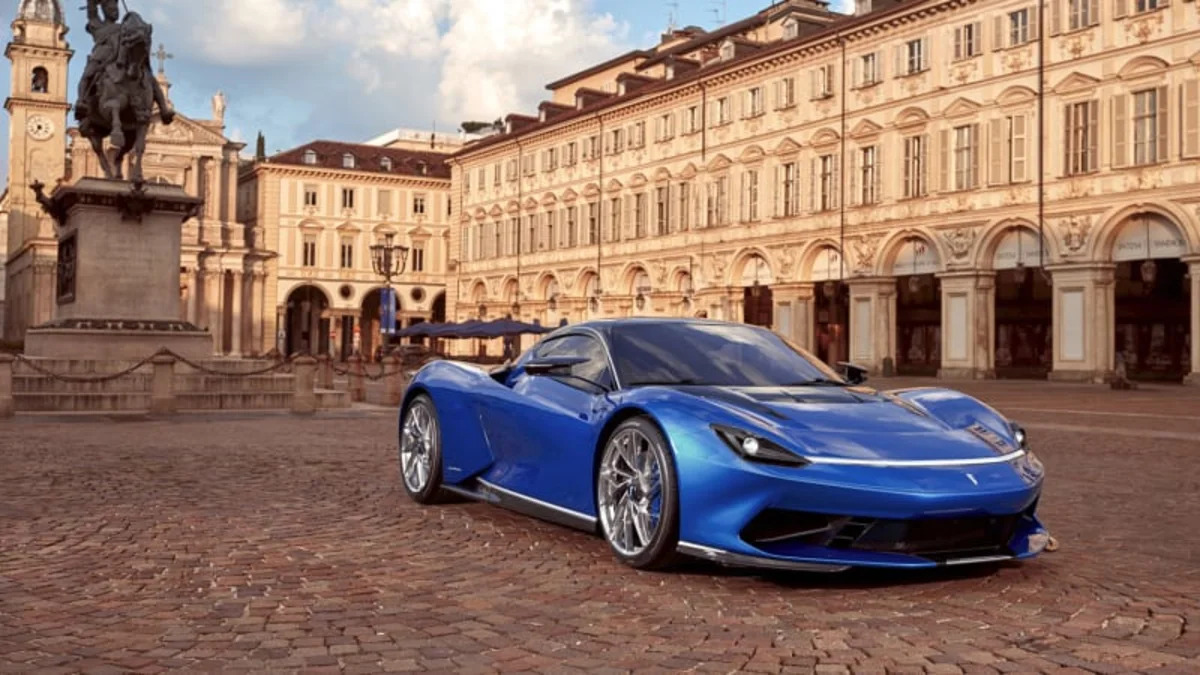Pininfarina has historically operated as a respected design house, as a coachbuilder, and as a contract manufacturer. It's leveraging its expertise in all three areas to morph into a full-fledged automaker, and CEO Michael Perschke revealed how his team aims to position the brand as a credible alternative to some of the world's most exotic automakers.
Its first model, an electric, 1,900-horsepower supercar named Battista (pictured), is already on its way to limited production. Pininfarina will build 150 examples of it starting in late 2020. It's a statement of intent that points to the direction the firm wants to take as it builds a full lineup of cars. Its future models won't all have 1,900 horsepower, for better or worse, but they'll be electric, luxurious, exclusive, and correspondingly expensive.
Pininfarina needs to release more volume-oriented cars to stay afloat, and to stay relevant. Perschke told Automotive News Europe his team has "a very clear intent not to remain a one-hit wonder." The automaker is talking with an unnamed supplier about jointly developing a platform to build high-end electric cars on. It will be a skateboard-like chassis, meaning it will incorporate the battery pack and the motors, and it will be modular enough to underpin a number of body styles.
There are many turn-key electric car platforms available now or in the not-too-distant future, and the companies developing them are eager to share in order to split their sky-high development bill. However, Perschke ruled out using the Volkswagen Group's PPE platform (the one found under the Porsche Taycan and the Audi E-Tron GT) because it can't underpin a tall SUV. He didn't comment on an earlier report claiming the high-riding super-EV would use Rivian bones, but his quest to develop a platform from scratch makes it sound like the deal is off the table. That table has turned, too; Pininfarina now hopes to license the use of its upcoming platform to other brands.
The firm will gather feedback from potential customers around the globe as it crafts its lineup. The aforementioned SUV might be joined by a sedan during the early 2020s, and it's not difficult to imagine a stately coupe. Regardless of doors and ground clearance, its electric cars will offer up to 372 miles of driving range thanks to a lithium-ion battery pack with a capacity of 100 to 125 kilowatt-hours.
While the Battista starts at $2.2 million, the more down-to-earth models will cost between 200,000 and 400,000 euros (about $225,000 and $450,000, respectively). They'll land in the same price bracket as well-regarded members of the Bentley and Rolls-Royce range, and the Lagonda-badged electric models currently under development at Aston Martin's headquarters. Taking on the luxury car segment's stalwarts is easier said than done, but the shift towards electrification improves Pininfarina's odds of winning because, technologically, the players are all starting the race on the same line.
Pininfarina has one previous stint as an automaker under its belt. In 1983, when Fiat stopped selling the original 124 Spider and left the United States, Malcolm Bricklin's International Automobile Importers acquired the distribution rights and sold the roadster as the Pininfarina Spider. Production finally ended after the 1985 model year.


Sign in to post
Please sign in to leave a comment.
Continue